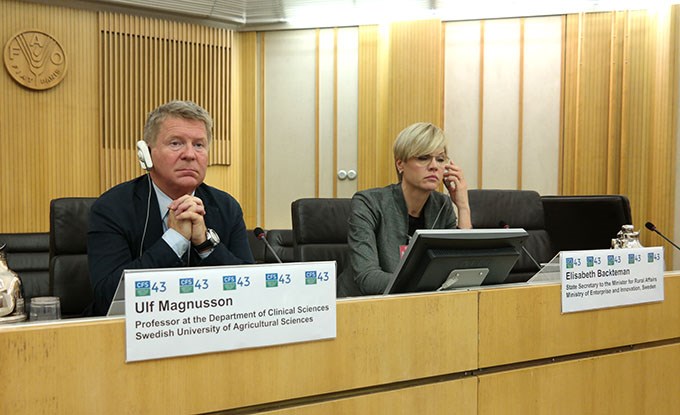The event Low use of antimicrobials and healthy productive animals – a possible equation? was organized as a side-event at the UN Global Committee for Food Security, CFS43, on the 19 October. The event showcased why one cannot justify the non-rational use of antimicrobials (AM) in the livestock production and that there are ways to reduce the use of AM in the sector and maintain healthy and productive animals. For such a change, regulations and policies are not sufficient; instead animal health management alternatives must be provided.
Antimicrobials (AM) are needed to keep livestock healthy and productive so the sector can provide food for people. However, non-rational use of AM in the livestock sector increases the risk for development of antimicrobial resistance (AMR). As there is a growing concern worldwide in the health sector about the emergence of AMR worldwide it is essential that the livestock sector takes action to reduce the non-rational use of AM.
Sweden pioneers the livestock sector
Sweden pioneered AMR policy by banning routine use of AM for prophylactics and growth promotion in the livestock sector in 1986. The initiative came from farmers who noticed resistance and got concerned. Currently Sweden uses very little AM in its livestock systems and has the lowest levels of AMR in the EU, while its livestock sector productivity can compete with that of the US.
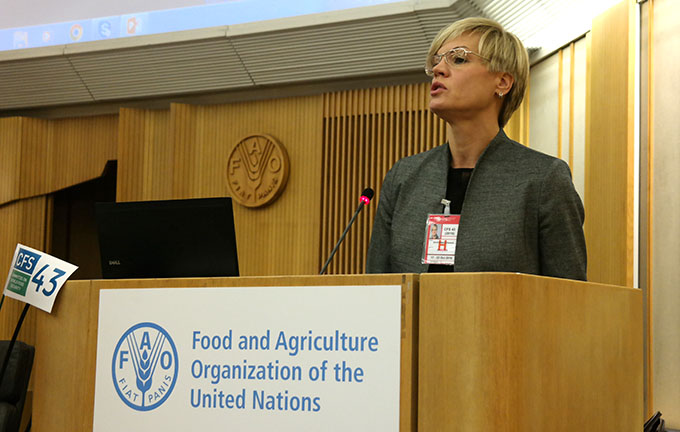
- It is crucial to work with AMR on the international level because it is a global threat. There are, however, ways to deal with this threat. Working together, we can share experience and learn from each other, said Elizabeth Backteman, State Secretary to the Minister for Rural Affairs of Sweden in her opening remarks at the event.
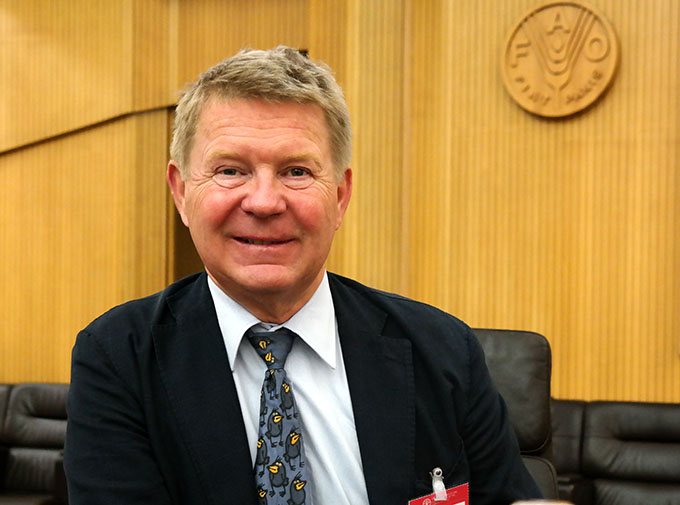
The use of AM in the livestock sector outweighs human consumption of antibiotics by far, and because very few countries have effective monitoring and control systems, we can only assume how much antibiotics are used in our livestock systems. - Prevention is better and cheaper than cure. Countries need to review the practice and regulation of current antimicrobial use, advised Professor Ulf Magnusson, from the Department of Clinical Sciences (SLU) during his keynote presentation.
The secret to Sweden’s success in reducing the use of AM in the livestock sector, is high standards of animal welfare, strict prescription of antibiotics and a perspective in policy, which implies working cross-sector and collaboratively on the intersection of human, animal and environmental health. - Just like humans, animals need to have different places to eat, to sleep and to go to the toilet. Sectioning stables and leaving them empty from time to time and taking animals out is one measure for stopping the spread of bacteria. We use antibiotics only when large groups of animals get sick, Christina Furustam from the Federation of Swedish Farmers (LRF) pointed out in her talk.
Before the panel discussion, Ola Möller, Senior Policy Specialist, spoke of Sida's involvement and FAO's Chief Veterinary, Juan Lubroth, gave a presentation of FAO's work and the recently adopted action plan The FAO Action Plan on Microbial Resistance 2016-2020. 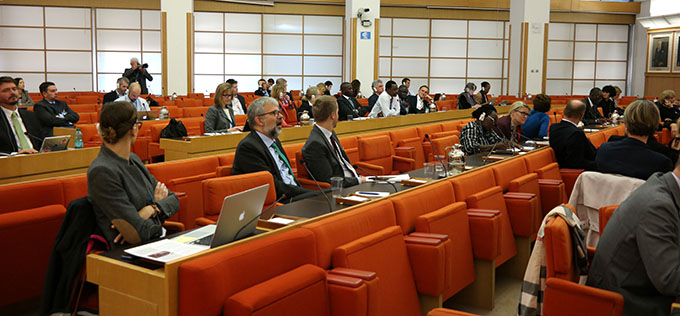
The interest from the audience of about 70 people was immense, which appeared during the time for questions. No one in the crowd challenged the importance of reducing the use of antibiotics in livestock farming, but on the contrary assimilated the message that with good husbandry, the animals generally get healthier and the profitability can be maintained. The difficulty of reducing the use of AM is that the benefits might not be seen until later, and then it may be too late. In today's global world with people travelling and with animals and goods moving across borders very quickly, global cooperation is indispensable in order to avoid the serious consequences that would otherwise be the case.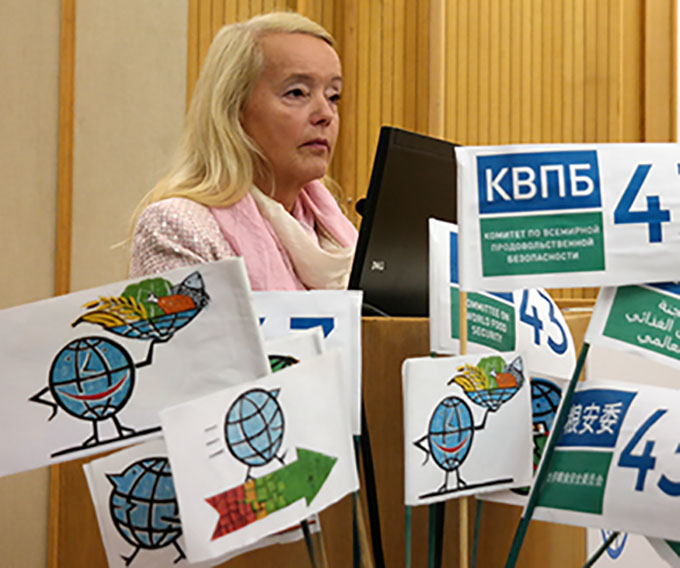
The session was moderated by Cecilia Nordin van Gansberghe, Ambassador, Senior Advisor at the Ministry of Enterprise and Innovation.
